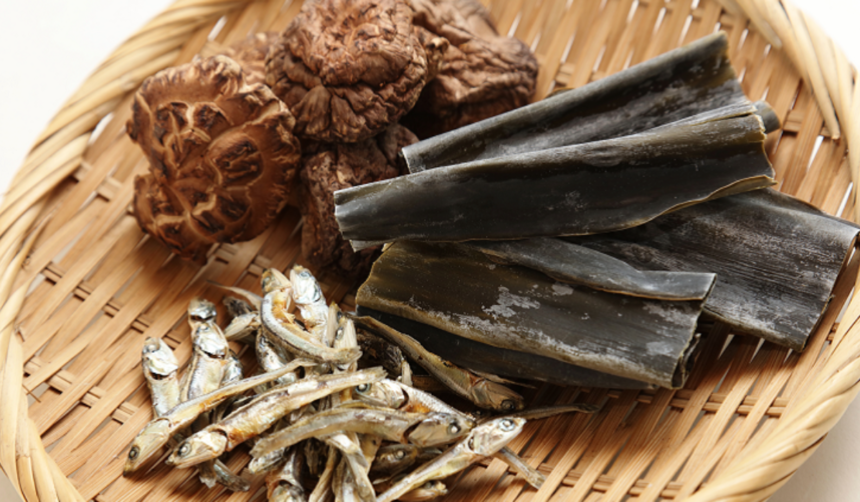Umami: Unraveling the Fifth Taste in Japanese Cuisine
Introduction
In the world of culinary arts, taste is a multifaceted concept that goes beyond the basic sweet, sour, salty, and bitter. One taste that has been gaining recognition in recent years is umami, also known as the fifth taste. Umami is a Japanese term that loosely translates to “deliciousness,” and it is often described as a savory, meaty, or brothy flavor. In this article, we will unravel the mysteries of umami and explore its significance in Japanese cuisine.
The Discovery of Umami
Umami was first identified by Japanese scientist Kikunae Ikeda in 1908. Ikeda was intrigued by the distinctive flavor of dashi, a traditional Japanese soup stock made from kombu seaweed and dried bonito flakes. He isolated the compound responsible for this unique taste and named it umami, which led to the discovery of glutamate as the key component of umami flavor.
Umami Taste Receptors
Umami taste receptors were discovered in the early 2000s, further solidifying the fifth taste as a legitimate category in the culinary world. These receptors are found on the tongue and are responsible for detecting the presence of glutamate, as well as other compounds that contribute to umami flavor, such as inosinate and guanylate.
Umami-Rich Foods in Japanese Cuisine
Japanese cuisine is renowned for its umami-rich ingredients and dishes. Some of the most iconic umami sources in Japanese cuisine include:
1. Kombu: A type of edible kelp that is used to make dashi, a foundational ingredient in Japanese cooking.
2. Bonito flakes: Dried, fermented, and smoked skipjack tuna that is often used to make dashi.
3. Miso: A fermented soybean paste that adds a rich, savory flavor to soups, marinades, and sauces.
4. Soy sauce: A fermented condiment made from soybeans, wheat, water, and salt that is a staple in Japanese cuisine.
5. Green tea: Contains high levels of the amino acid theanine, which contributes to its umami flavor.
6. Shiitake mushrooms: A type of mushroom with a meaty texture and intense umami flavor that is commonly used in Japanese cooking.
7. Oysters: Known for their briny, savory flavor, oysters are a popular umami-rich ingredient in Japanese cuisine.
Umami and Flavor Enhancement
One of the key characteristics of umami is its ability to enhance and deepen the overall flavor of a dish. When umami-rich ingredients are added to a recipe, they work synergistically with other flavors to create a harmonious and satisfying taste experience. This is why umami is often referred to as the “flavor enhancer” in Japanese cuisine.

Umami and Culinary Techniques
Japanese chefs have mastered the art of incorporating umami into their cooking through various techniques. Some of the most common methods for enhancing umami in Japanese cuisine include:
1. Fermentation: Fermented foods like miso, soy sauce, and sake are rich sources of umami flavor due to the breakdown of proteins into amino acids during the fermentation process.
2. Slow cooking: Braising, simmering, and stewing are cooking methods that help to extract and intensify the umami flavors of ingredients.
3. Dashi-making: The process of making dashi involves steeping kombu and bonito flakes in water to create a savory broth that forms the base of many Japanese dishes.
4. Grilling: Grilling meats and fish over an open flame can create caramelization and enhance their umami flavors.
5. Marinating: Marinating proteins in umami-rich ingredients like soy sauce, mirin, and sake can infuse them with a deep, savory taste.
Umami in Japanese Street Food
Japanese street food is a tantalizing showcase of umami flavors. From savory takoyaki (octopus balls) and okonomiyaki (savory pancakes) to rich ramen and hearty yakitori (grilled skewers), street vendors use umami-rich ingredients and cooking techniques to create irresistible and satisfying dishes that keep customers coming back for more.
Umami in Traditional Japanese Kaiseki Cuisine
Kaiseki is a traditional Japanese multi-course meal that showcases the seasonality and beauty of ingredients. Umami plays a crucial role in kaiseki cuisine, as chefs carefully select and prepare umami-rich ingredients to create a balanced and harmonious dining experience. From delicate sashimi and flavorful soups to tender grilled meats and fresh vegetables, each dish in a kaiseki meal is thoughtfully crafted to highlight the natural umami flavors of the ingredients.
Umami in Modern Japanese Fusion Cuisine
In recent years, chefs around the world have been incorporating umami-rich ingredients and flavors into their own culinary creations, leading to the rise of modern Japanese fusion cuisine. This innovative approach to cooking combines traditional Japanese techniques and umami-rich ingredients with global flavors and influences to create dishes that are both bold and inventive. From umami-packed ramen burgers and sushi burritos to miso-glazed salmon and soy-marinated beef, modern Japanese fusion cuisine offers a tantalizing array of umami-driven dishes that push the boundaries of traditional Japanese flavors.
Umami and Health Benefits
In addition to its culinary appeal, umami has been linked to a number of health benefits. Glutamate, the primary compound responsible for umami flavor, is an essential amino acid that plays a key role in neurotransmission and protein synthesis in the body. Studies have also shown that umami-rich ingredients like seaweed, mushrooms, and fermented soy products can support digestive health, reduce inflammation, and boost the immune system.
Umami: The Future of Japanese Cuisine
As the culinary world continues to evolve and embrace new flavors and ingredients, umami remains a cornerstone of Japanese cuisine. With its ability to enhance and deepen the overall taste experience of a dish, umami will undoubtedly play a vital role in shaping the future of food and dining. Whether through traditional kaiseki meals, modern fusion creations, or street food favorites, umami will continue to captivate diners and inspire chefs around the world to explore the limitless possibilities of the fifth taste.
Conclusion
Umami, the fifth taste in Japanese cuisine, is a fascinating and complex flavor that adds depth, richness, and complexity to dishes. From its discovery by scientist Kikunae Ikeda to its culinary applications in traditional kaiseki meals and modern fusion cuisine, umami has become a prized ingredient that chefs and food lovers alike cherish. With its unique ability to enhance and elevate the overall flavor of a dish, umami will undoubtedly continue to be a central element in the ever-evolving world of culinary arts.
FAQs about “Umami: Unraveling the Fifth Taste in Japanese Cuisine”
- What makes “Umami: Unraveling the Fifth Taste in Japanese Cuisine” a compelling read for food enthusiasts? “Umami” delves into the intricate world of Japanese cuisine, exploring the concept of umami—the fifth taste—and its significance in Japanese culinary traditions. It offers a fascinating exploration of flavor, culture, and culinary science.
- What is umami, and why is it important in Japanese cuisine? Umami is often described as the fifth taste, alongside sweet, salty, sour, and bitter. It is a savory, mouthwatering sensation that enhances the overall flavor of food. In Japanese cuisine, umami is highly valued for its ability to impart depth and complexity to dishes.
- How does “Umami” unravel the mysteries behind this elusive taste? “Umami” unravels the mysteries of umami by exploring its origins, characteristics, and culinary applications. It delves into the science behind umami, the role of glutamate in creating savory flavors, and how umami-rich ingredients like dashi, miso, and soy sauce are used in Japanese cooking.
- Are specific Japanese dishes and ingredients featured in this book? Yes, “Umami” features a variety of Japanese dishes and ingredients that showcase the depth and complexity of umami flavor. From sushi and ramen to grilled meats and simmered vegetables, readers will discover how umami enhances the taste of traditional Japanese cuisine.
- Can readers expect to gain practical insights for incorporating umami into their own cooking? Absolutely! “Umami” provides readers with practical insights, cooking tips, and recipe ideas for incorporating umami-rich ingredients into their own culinary creations. Whether you’re a novice cook or an experienced chef, you’ll find inspiration to elevate your dishes with the savory taste of umami.
Advantages:
- Intriguing topic: The title “Umami: Unraveling the Fifth Taste in Japanese Cuisine” addresses a captivating subject—the concept of umami—and its significance in Japanese culinary culture, immediately piquing the reader’s curiosity.
- Educational value: By focusing on umami, the title promises readers a deeper understanding of this unique taste sensation and its role in Japanese cuisine, providing valuable insights into the science and cultural significance of umami.
- Cultural immersion: The title suggests an exploration of Japanese culinary traditions and flavors, as umami is closely associated with Japanese cooking, fostering a deeper appreciation for Japanese culture.
- Gastronomic exploration: Readers can anticipate learning about a variety of Japanese dishes and ingredients that exemplify the umami taste, providing them with a comprehensive overview of the diverse culinary landscape of Japan.
- Practicality: By featuring umami in Japanese cuisine, the title appeals to readers interested in exploring authentic Japanese flavors, providing them with practical tips, recipes, and insights to incorporate umami-rich ingredients into their cooking.
Disadvantages:
- Niche appeal: The topic of umami may be unfamiliar to some readers, limiting the appeal of the title to those specifically interested in culinary science or Japanese cuisine.
- Lack of specificity: While umami is mentioned, the title does not specify which aspects of umami or Japanese cuisine will be explored, leaving readers uncertain about the scope of the content.
- Potential oversimplification: Focusing solely on umami may oversimplify the richness and complexity of Japanese culinary traditions, overlooking other important aspects of Japanese cuisine.
- Accessibility of ingredients: Some umami-rich ingredients used in Japanese cuisine may be difficult to find outside of Japan or major culinary hubs, limiting the practicality of the recipes for some readers.
- Cultural appropriation: Without proper context and understanding, celebrating umami in Japanese cuisine could risk appropriating cultural elements without acknowledging their significance or respecting their origins.
















